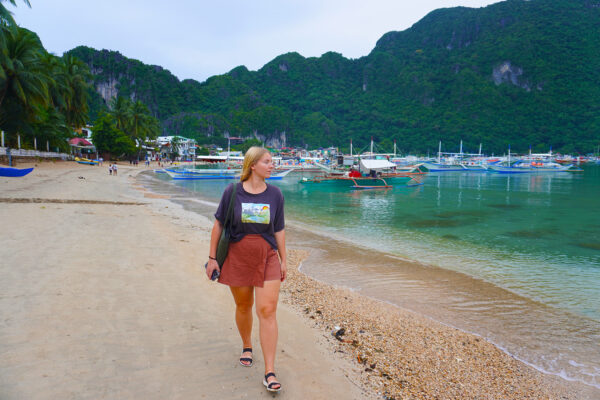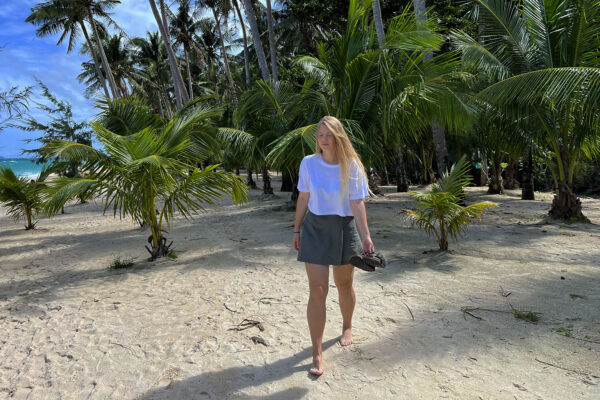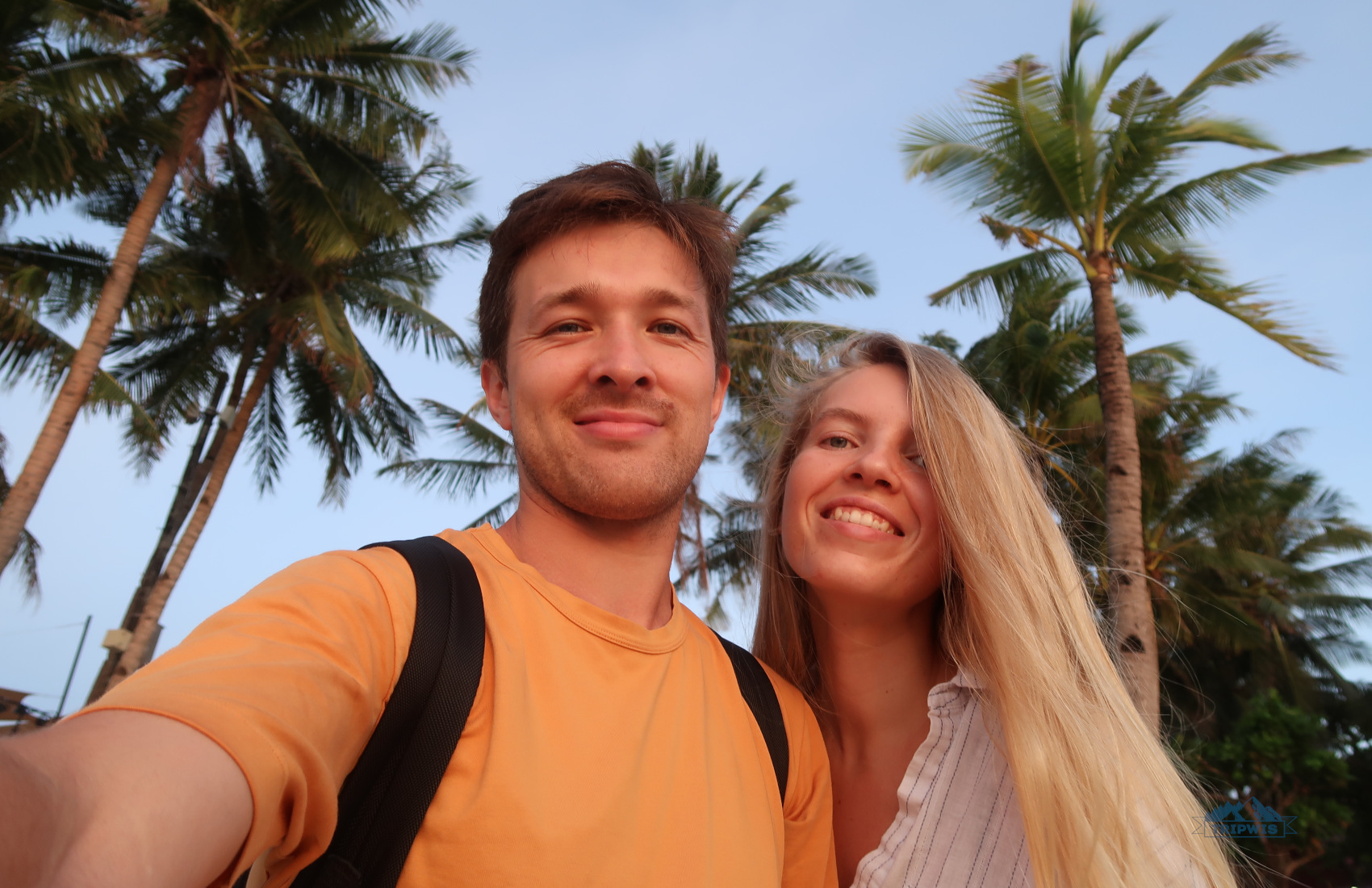
The Philippines are well-known as a one-of-a-kind tropical destination where everything is possible, in a good way and in a bad way. The country is famous for its proneness to typhoons, floodings, volcanic eruptions, earthquakes, — these things happen here more often than you would like them to.
Thankfully, Palawan sits right outside the Pacific Ring of Fire (a tectonic belt of seismic activity), meaning there are no earthquakes in the immediate area, and the only small volcano on the island is inactive. The one thing that can truly spoil your blissful vacation in Palawan is a typhoon!
So, it’s a good idea to choose the best time to visit Palawan to avoid the more uncomfortable and straight up annoying parts of its unique climate. Get ready, because we will:
- examine each month in great detail,
- give you tips on how to survive and enjoy the best and the worst vacation time frames on the island,
- as well as help you make an informed decision in the end!
Article contents
- Monthly weather in Palawan
- Dry season in Palawan — December through May
- Wet season in Palawan — June through November
- When not to go to Palawan?
- Where to stay on Palawan Island?
- More things to know
- So, what is the best month to visit Palawan?
Monthly weather in Palawan
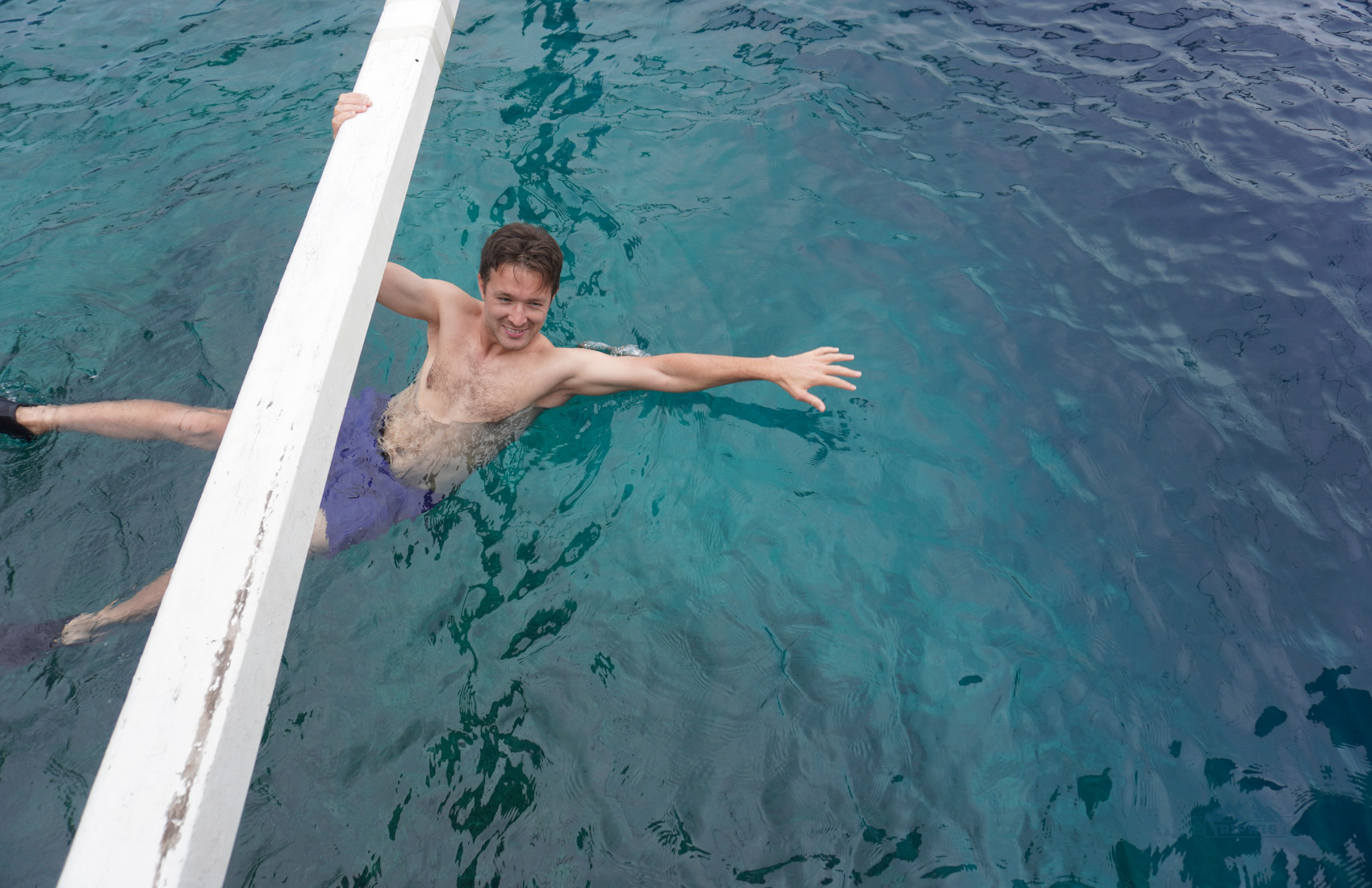
Palawan continues to win awards and find its way to yearly “best of” lists, with millions of travelers raving about their experiences on the island. Coming here is a dream come true, but one question remains at the top of everyone’s planning efforts: What is the best time to visit Palawan?
Side note: Our guide has a very thorough breakdown of Palawan’s weather, but you should keep in mind its unpredictable nature. You can look at a day’s forecast expecting heavy rains and thunderstorms, when in reality it’ll rain for half an hour, giving way to warm sunlight. So, do not take each month’s features as an unyielding set of circumstances, they can change in an instant!
Make sure to refer to the table below as you read the article. That way, you can put numbers to words and understand the weather conditions better during each month of the year in Palawan.
| Average day temperature | Water temperature | Rainy days | Typhoon watch | Sunniest months | |
| January | 29.2°C / 84.6°F | 28.1°C / 82.6°F | 9 | ||
| February | 29.4°C / 85°F | 27.6°C / 81.7°F | 4 | ||
| March | 30.3°C / 86.5°F | 28°C / 82.4°F | 5 | ✓ | |
| April | 31.3°C / 88.3°F | 29.3°C / 84.7°F | 6 | ✓ | |
| May | 31.8°C / 89.2°F | 30.4°C / 86.7°F | 12 | ✓ | |
| June | 31.2°C / 88.2°F | 30.1°C / 86.2°F | 17 | ✓ | |
| July | 30.5°C / 86.9°F | 29.6°C / 85.3°F | 15 | ✓ | |
| August | 30.8°C / 87.4°F | 29.3°C / 84.7°F | 14 | ✓ | |
| September | 30.5°C / 86.9°F | 29.3°C / 84.7°F | 13 | ✓ | |
| October | 30.3°C / 86.5°F | 29.4°C / 85°F | 16 | ✓ | |
| November | 30.2°C / 86.4°F | 29.3°C / 84.7°F | 12 | ||
| December | 29.8°C / 85.6°F | 29°C / 84.2°F | 12 |
The coldest months | The warmest months | Dry season | Wet season
Let’s get one thing out of the way: There’s no “windy season” in Palawan per se, as the weather here is characterized by two wind systems — Amihan and Habagat. There is some wind (different kinds, dry and breezy or strong and wet) year-round in Palawan, but the strongest option — a storm, or a typhoon — can usually occur during a five-month period (September and October months are the main culprits).
The two seasons — dry and wet — have very different decisive factors that help you make a choice when planning a trip to Palawan. What are they and how does Palawan’s weather change on the monthly basis? Here’s our breakdown:
Dry season in Palawan — aka best time to visit the island
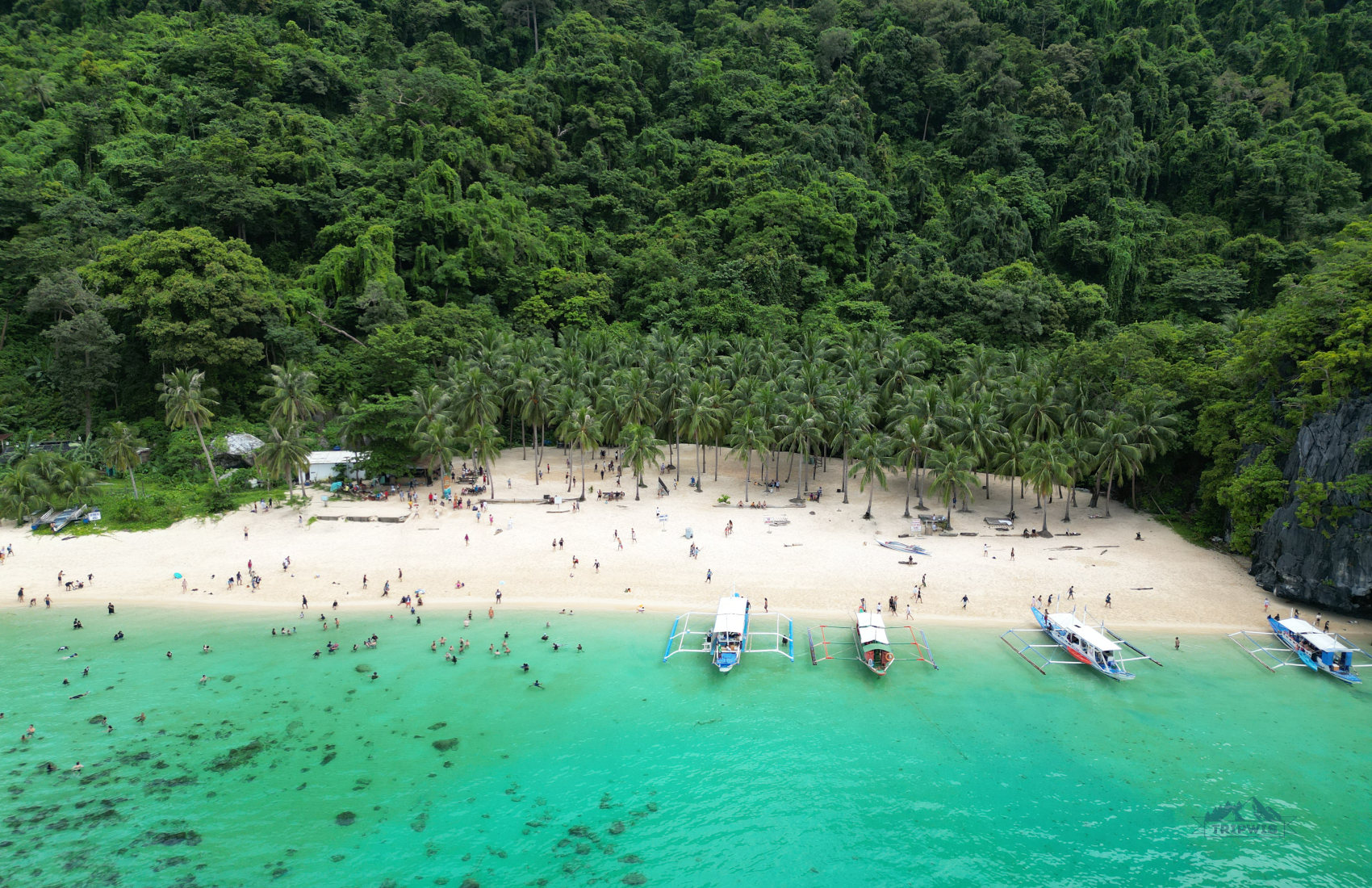
Dry season in Palawan lasts from December to May and is considered to be the best time to visit the island. Its main features are outlined by Amihan — also known as the Northeast Monsoon — the wind pattern that is synonymous with gentle breezes and dry atmosphere. Is it a superior season? We’re not here to play favorites, but the fact that this period is also considered to be Palawan’s high season should say a lot.
Pros of Palawan’s dry season:
+ Major clear skies and sunny days disposition. You will have lots of chances to fill up on that Vitamin D everybody’s been worried about!
+ Perfect beach weather. Air and water temperatures guarantee your beach days to be long and full of relaxation.
+ There’s less chance of getting rained in; and if it does rain, the short showers feel refreshing, like a much-needed escape from the heat. Your parade may get rained on, but it will march forward without so much as missing a step!
+ Ideal conditions for water activities. Snorkeling, diving, island hopping, — try not to forget how to walk after spending so much time in the water!
Cons of Palawan’s dry season:
— Peak tourist season means packed beaches. Is it an Eras Tour concert or is it a beach in Palawan in December???
— Growth in demand means higher prices for services and accommodations. You might want to start saving up a little if you plan on having your Palawan vacation during the high season.
— The need for foresight. You might want to book your hotel room way in advance if you want to reap all the benefits of Palawan’s dry season.
While the entire dry season in Palawan can be boiled down to cool and pleasant breeze, calm waters, and moderate temperatures, each month still brings a certain je ne sais quoi to the table.
So, we feel it’s best if you look into every given 30-day period in more detail.
December
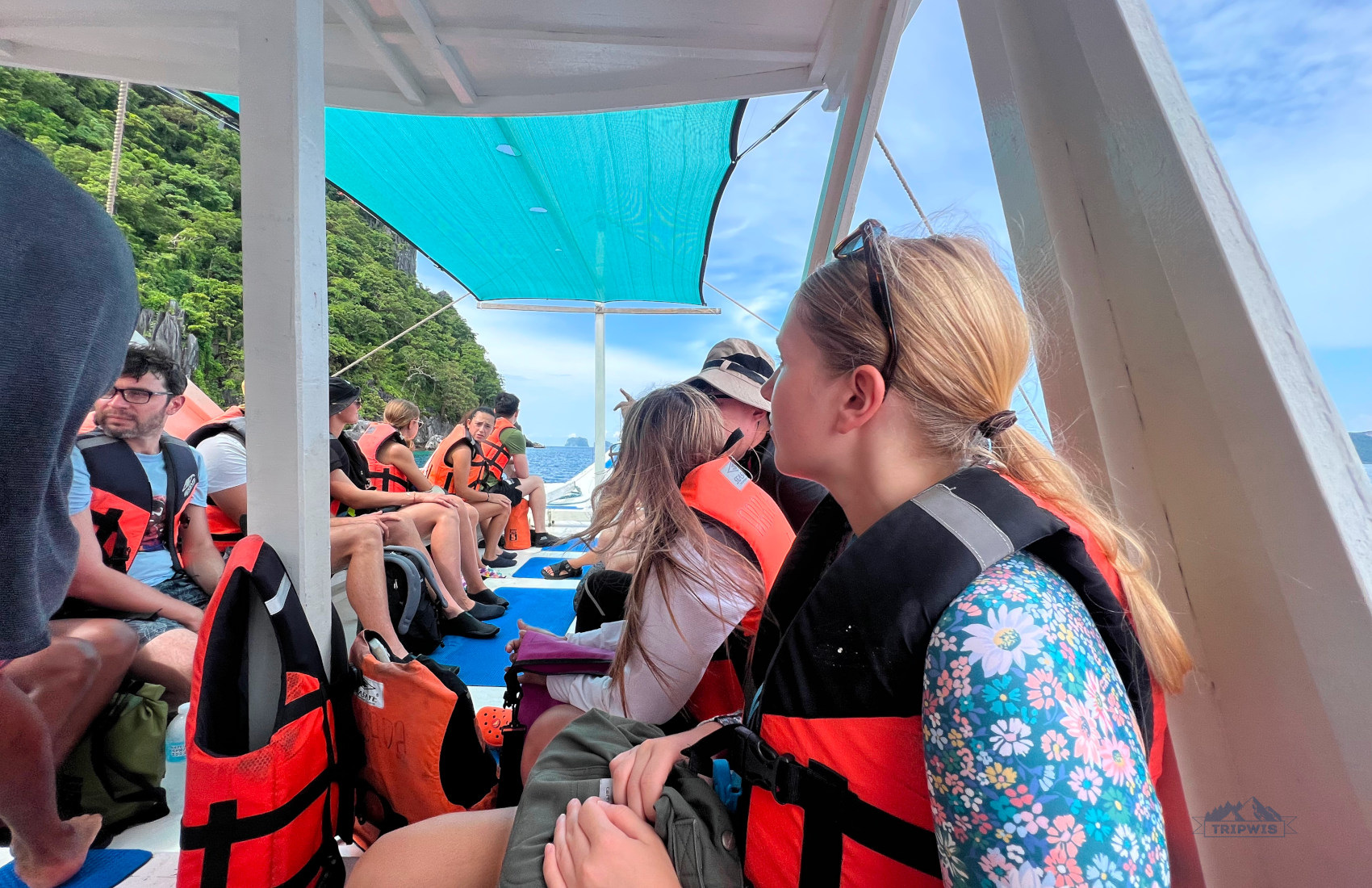
December is the true start of Palawan’s high season. The sun is shining, the birds are chirping, the party animals are falling asleep on the beach after a wild night out… It’s an exciting picture, no doubt about that.
But do not forget — December is all about Xmas. So every possible establishment and service on the island will be geared towards the demands of the festivities.
- Filipinos are Catholics, and most of them love to spend their Christmas holiday chilling by the water, swimming, and drinking Piña coladas — a stark contrast to what the rest of the world considers a classic Christmas pastime. Because of the increased flow of tourists to the island, expect the prices for accommodation and services to rise up significantly (also anticipate larger crowds at the beaches).
December in Palawan sees the air and water temps existing in a wonderful symbiosis, the winds keeping themselves at bay, and the overall atmosphere supportive of having a merry and bright time.
Cooler days (being in the Philippines will make you consider +29.8°C / 85.6°F to be a relatively cool temperature!) and colder evenings add a touch of the essential setting that is universally expected from Christmas vacation.
The “bad” weather is as rare a case during the holiday month in Palawan (though the occasional shower is expected; it’s the Philippines, after all!) as is an ugly Christmas tree (we have never seen one we didn’t like).
However… one point that could dampen your jolly mood is the weird exception to the rule that happened not that long ago. There was quite a bit of rainfall in Palawan in December of 2020 and 2021 — a wild bit that even caught the locals off guard (some say that it was the first such case in the last 25 years; global warming is no joke, y’all!). So, be wary of the possibility of this happening again, and get mentally prepared to weather the potential “storm”.
January
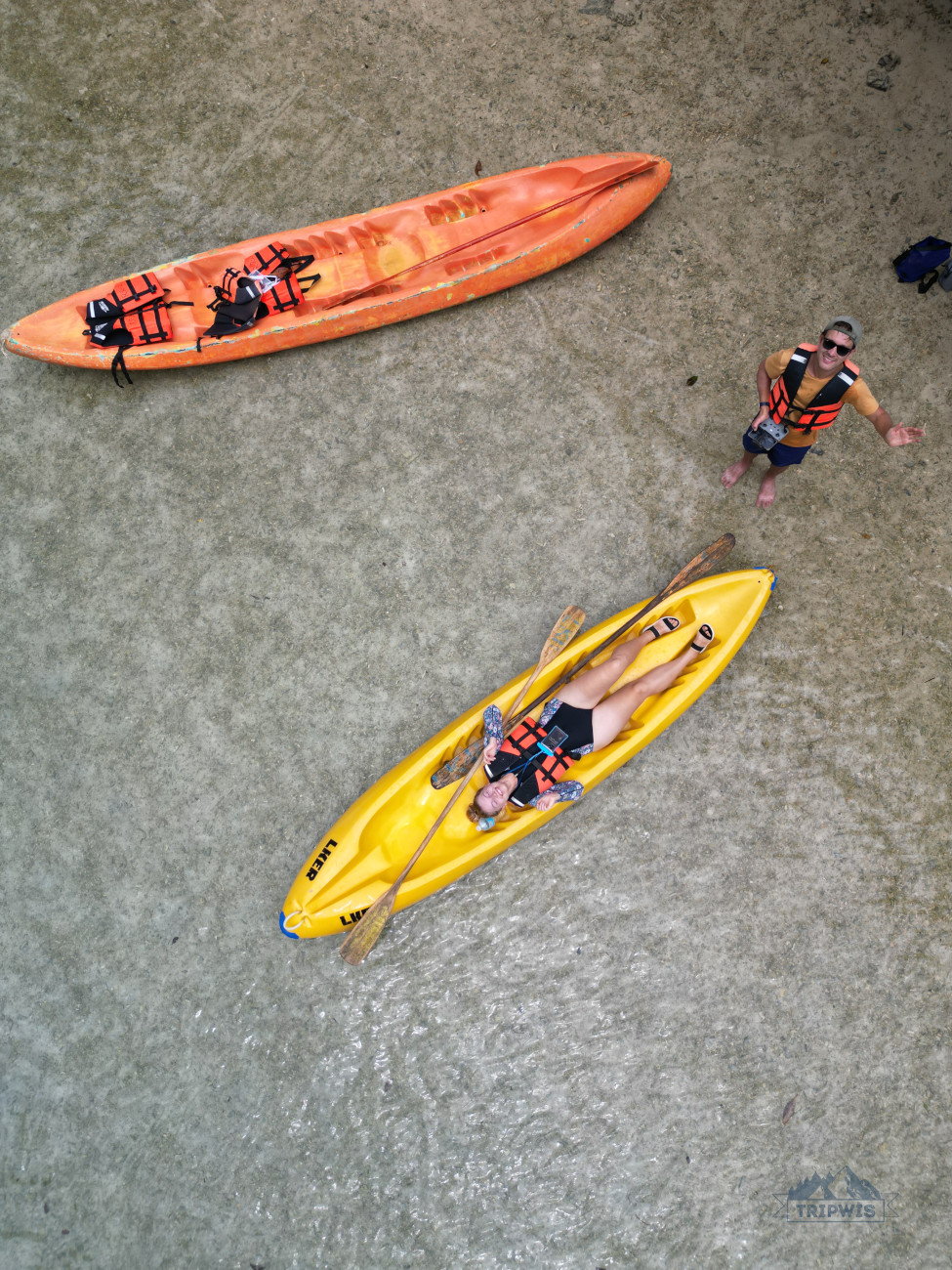 |
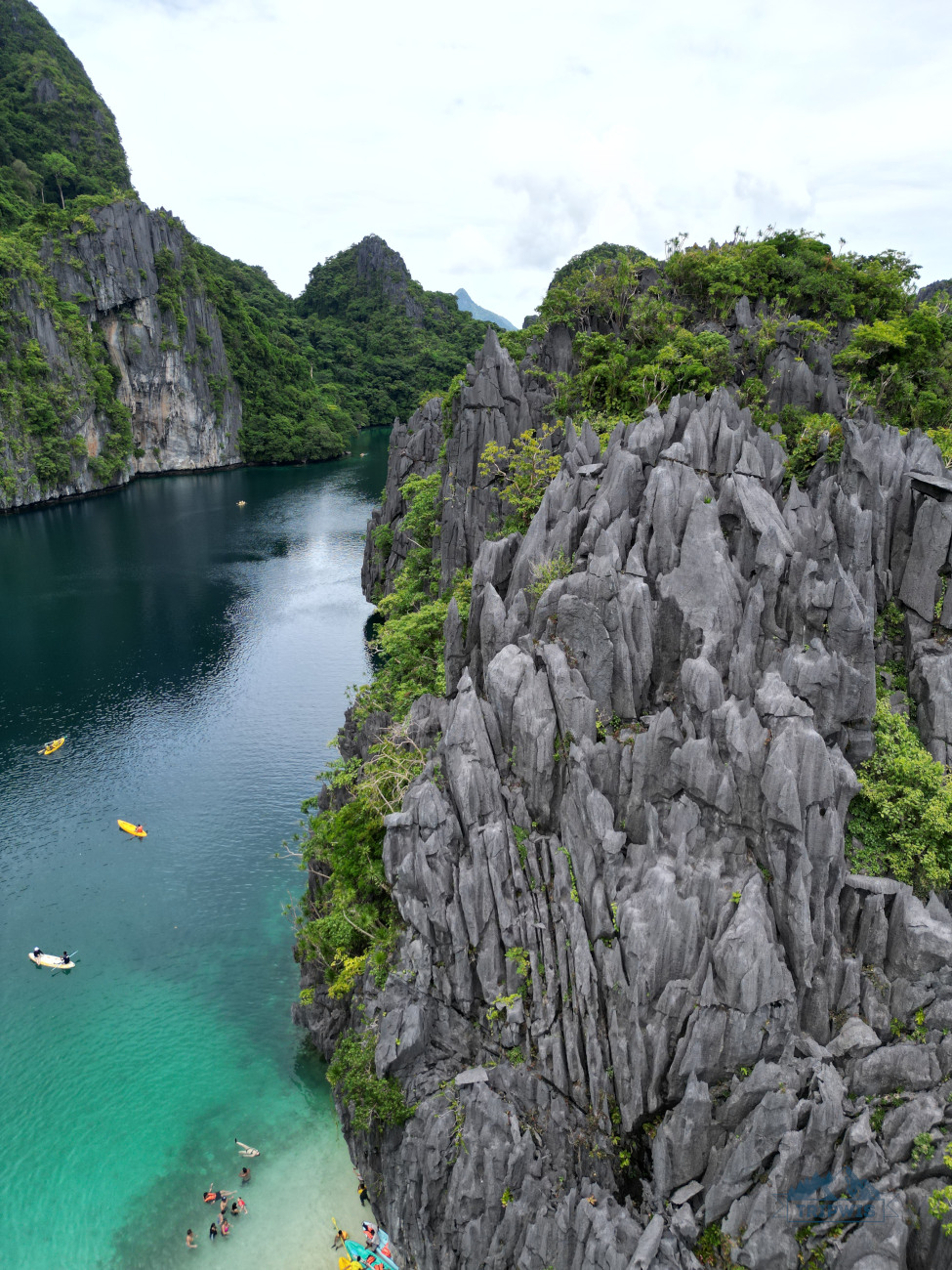 |
The beginning of the New Year is when high tourist season is officially in full swing in Palawan. During the month of January, sunny days and tranquil waters prevail (though there’s always a chance of sneaky rainfall, but it’s over and done with in record time).
We would consider January to be the best time to visit Palawan:
- The holiday crowds start to dissipate the further into the month you go (however, potential Chinese New Year celebrations may fall on the end of January, bringing in another wave of tourists),
- the prices are slowly returning to their more tolerable (by high season standards) brackets,
- and the weather is as great as a perfectly toasted marshmallow!
The calm waters, the gentle breeze of the cool and dry Northeast Monsoon, and relatively comfortable humidity levels create an atmosphere ideal for swimming and lounging on the beach all day.
Forget about the grind and your resolutions: For now, you first month of the new year will be dedicated to rest, relaxation, and all the possible pampering Palawan service industry has in store for you!
February
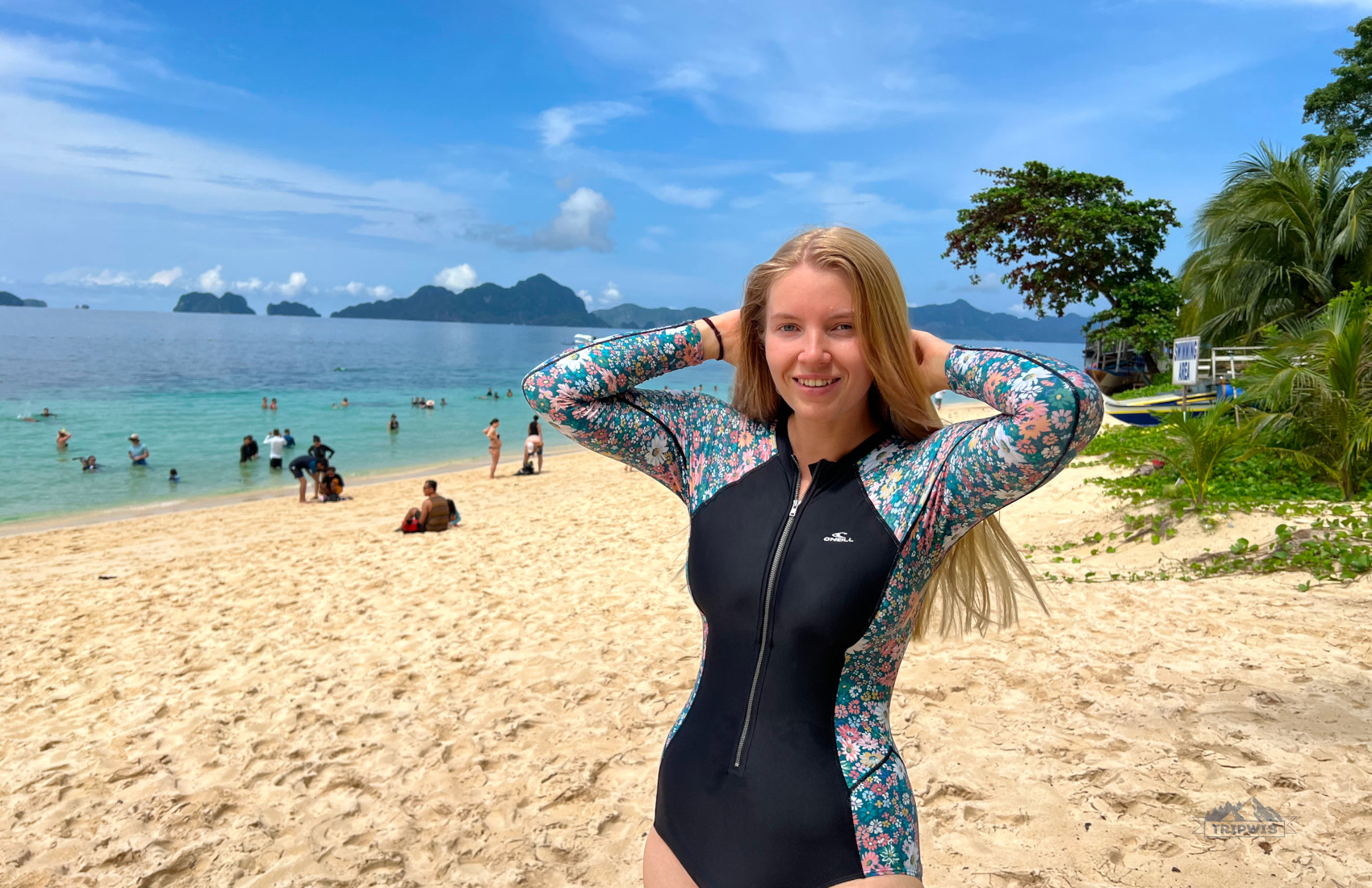
Valentine’s month continues January’s high horse attitude of spectacular weather! Apart from the obvious island romance appeal, the February conditions in Palawan are prime for all things water: Tours, underwater activities, and your general splashing around.
Even though the water temperature in Palawan during February is the coldest you’ll experience out of the entire year, it can hardly be described as cold or uncomfortable. The average temp of +27.6°C / 81.7°F is just a tad more refreshing, but in no way shriek-worthy.
- February rains are a little more considerate of the travelers’ itinerary. They mostly happen at night, with little to no traces of the nocturnal showers left when you wake up in the morning.
The winds are very demure and mindful as well: Even though it can get a tad windy (after dinner, just when you’re taking your afternoon siesta), the conditions rarely affect water activities. Even Tour C in El Nido (the most often cancelled tour out of the four; it takes you way farther into the open waters, where winds create stronger waves) happens every day, without any significant hiccups in the schedule.
February also has the least number of rainy days and the most number of sunny days (duh!). What can be considered as a true blessing, has some downsides that you should be aware of. The high UV index will make it easier for you to get burned in the sun. Remember the sun safety and reapply your SPF religiously — that way, your February in Palawan will go as smoothly as you’d hoped!
March and April
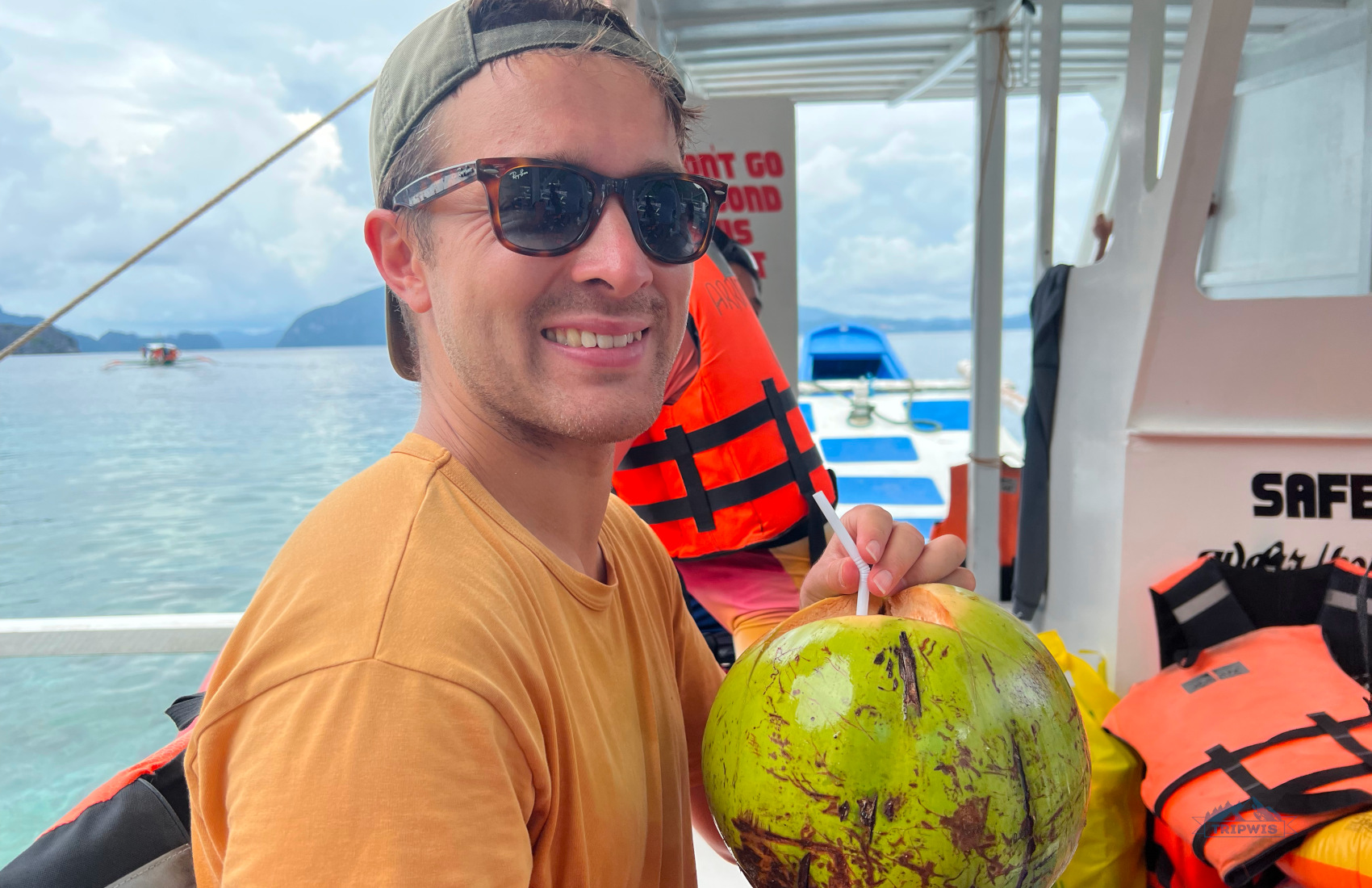
One of the sunniest months out of the year, March and April are serving real summer realness in Palawan. While March is tamer in temperatures, April has got it going on: The heat starts to creep up, beginning to teeter on the edge between fun and uncomfortable.
The winds are also dying down: The end of April sees some pretty still days, but even March breezes aren’t strong enough to help you remake a Mary Poppins schtick.
- In March and April, water temps reach the degree of a really warm bath, making it great for experiencing with little ones that aren’t fond of cool water (just be mindful of your offspring’s sun exposure, Palawan’s sun during this period is no joke).
The water visibility is great, so you can enjoy snorkeling and diving here like there’s no tomorrow. All in all, March and April are the last 100% enjoyable months of Palawan’s high (and dry) season. It’s all downhill from here!
Side note: The first quarter of the year is usually considered to be algae season in the Philippines, but you don’t have to worry about it in Palawan! Unlike Boracay (check out our posts on this paradise island!), Palawan beaches don’t have even a hint of green during this time. Though particular wind patterns can drive algae to the island’s shores, but it’s extremely rare and will be in no way as drastic as it usually is in Boracay.
May
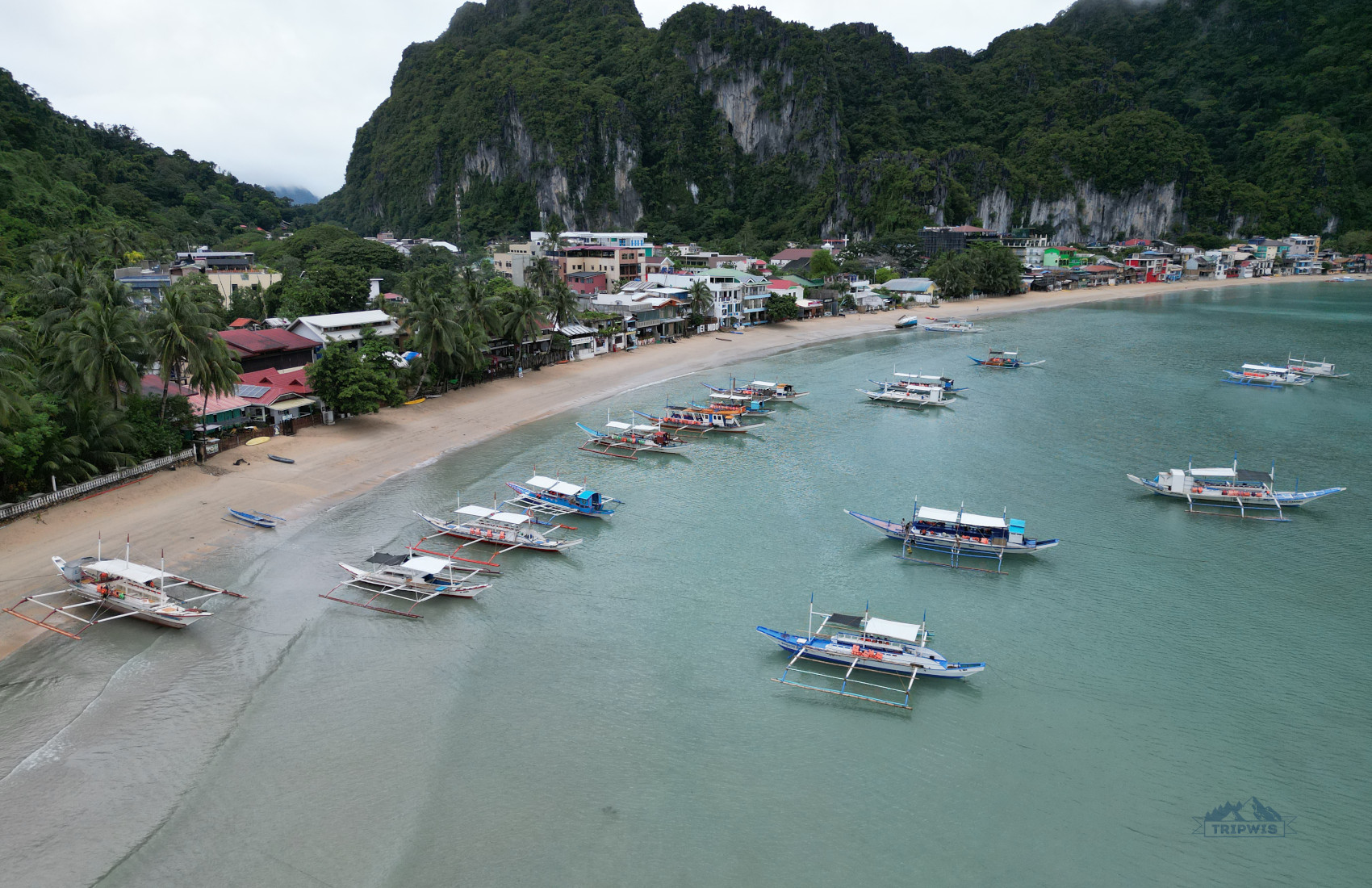
Easily the hottest month in Palawan, May is the dry season’s last hooray — it’s technically a transition month, where each passing day has more and more chances of rainstorms. The sea starts showing its moody side, but most days are still perfectly fine for swimming.
- Even if it sounds less appealing for a vacation, do not disregard the month completely: The main chunk of it is still sunshine and rainbows, albeit amongst very high temps.
Of course, it will be harder to enjoy being out and about when the temperatures range between +28°C…+33°C / 82-91°F on most days (and nights! in May, you cannot escape the heat even at nighttime in Palawan), and the afternoon thunderstorms will get harder and harder to ignore, but it’s still high season.
Is May a good time to visit Palawan? Well, let’s see: High humidity and extremely warm water temperatures add to the list of cons that you can expect from May weather in Palawan. But you might get “lucky” with some great weather if you choose this month for your island getaway.
Wet season in Palawan — not an ideal time to visit the island
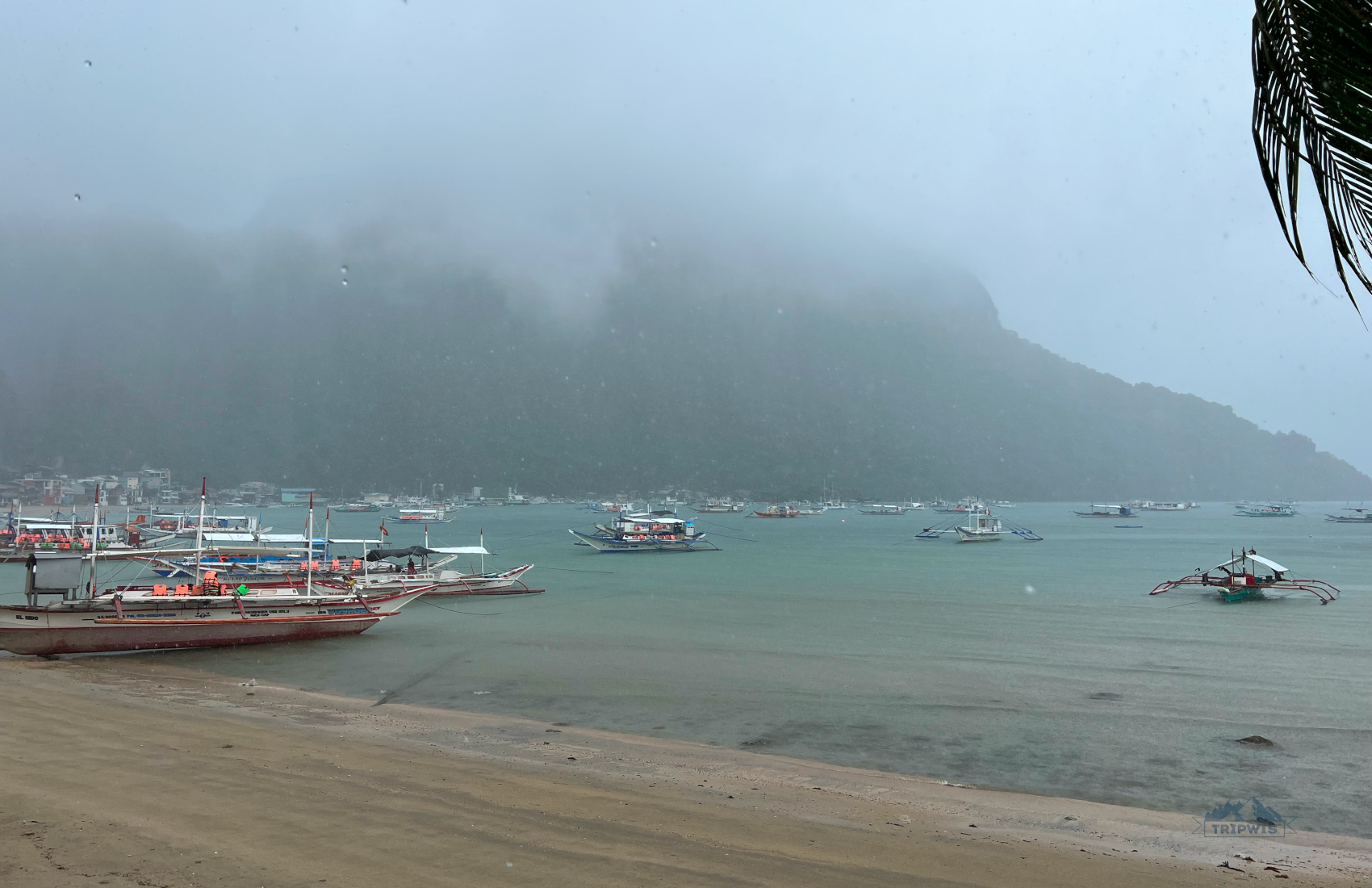
Lasting from June to November, wet season in Palawan is characterized by another wind system — Habagat. It brings strong winds and torrential downpours, but it’s not as discouraging of tourists as they make it out to be. Sure, it rains a lot during this period, but most of the action is happening at nighttime. If you get caught in the rain when out and about during the day, do not panic — it will stop in an hour or two, and the sun will come out like nothing even happened.
- We’ve visited Palawan in September — the worst month for a trip, as they say. But do you see lots of sunshine on our pictures? We’ve seen it, too!
Now, a typhoon is a whole another story. Palawan’s low season is susceptible to natural disasters, but the locals have managed to create a plan of action for bad weather, so you will hardly be stranded on the island with nothing to sustain you. Unless the things get really out of hand, you will hardly notice the consequences of a storm: The hotels and restaurants have generators and back up water sources, so electricity outages and water disruptions are few and far between; and if a business closes, it’s usually for a very short time.
Pros of Palawan’s wet season:
+ Better deals on accommodations in Palawan! This period isn’t as popular with tourists, so you can save some of your travel budget and have a grand ole’ time for way less.
+ Less crowds. It’s an obvious one, but we personally know a few hard-set introverts who would gamble on bad weather for a chance to have a beach relatively to themselves.
+ Beautiful nature! All the rain turns the island’s vegetation the most luscious shade of green you’ve ever seen. You will want to turn your camera saturation a bit when taking pictures of the verdant shrubbery, otherwise it can look fake!
Cons of Palawan’s wet season:
— Crazy mercurial weather. Palawan’s tropical climate is unpredictable at all times, but wet season is where the wackiness comes to party for real! Rainfall can happen when you least expect it, and there’s nothing you can do about it other than try to conform to its schedule.
— Activity cancellations. Palawan’s main tours are water tours, and choppy conditions and bad visibility manifest in rescheduling and cancellations of activities. Try and have at least a couple of back-up days where you can still experience your planned outings.
— Typhoons and storms. This part bears repeating: Palawan’s wet season definitely has more rain compared to dry season, but it generally doesn’t affect the day-to-day lives of tourists and locals. The arrangement changes when a typhoon hits: You can expect to be stuck in your hotel room for days at a time (continue reading for our list of storm-related tips)!
While it’s obvious that the island’s wet season is characterized by increased rainfall and less sunny days, it’s still good to dive into each particular month’s main features that separate them from one another. So, what are the rainy months in Palawan up to?
June and July
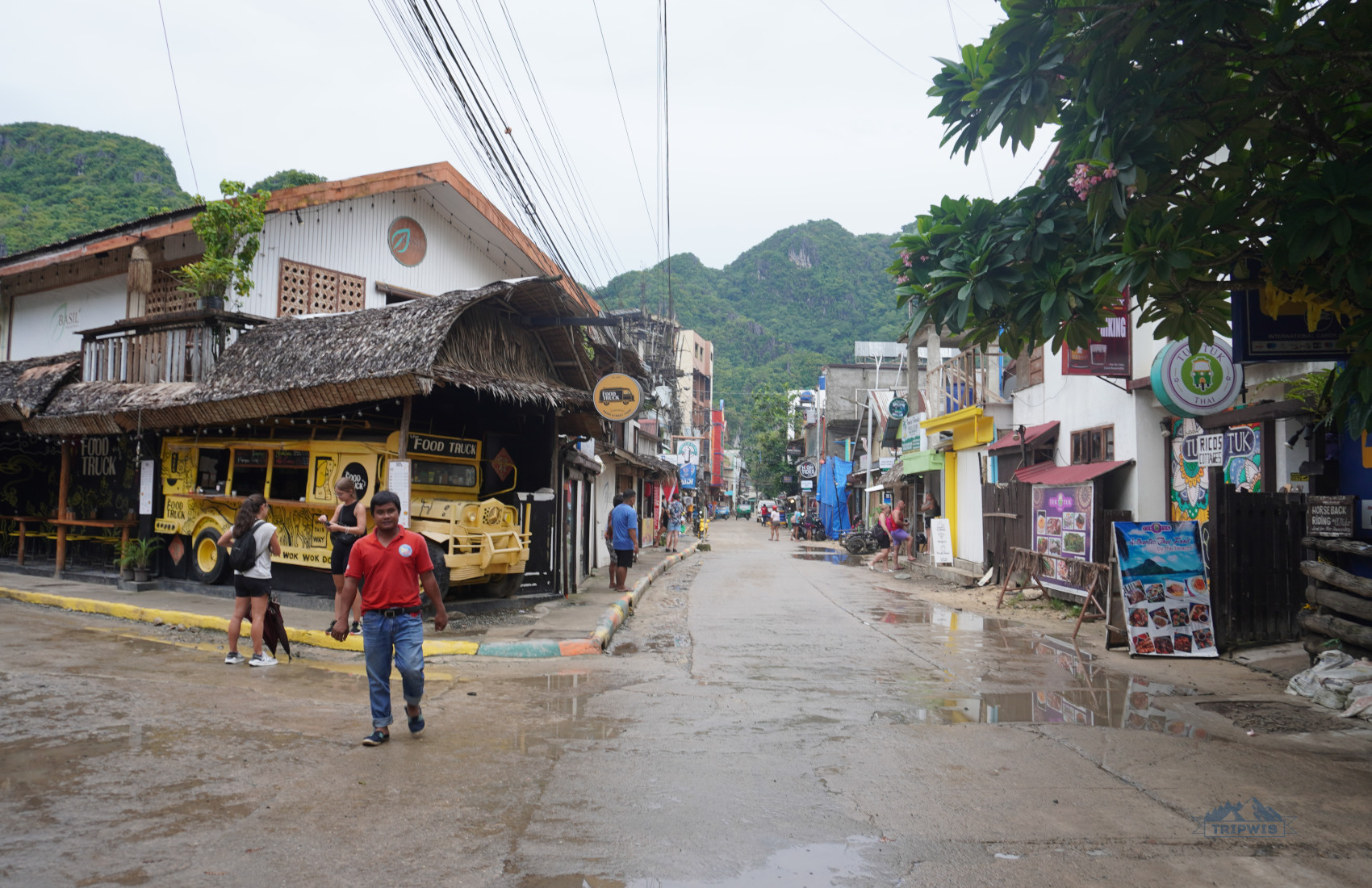
The months of June and July are the true stars of Palawan’s wet season. They bring on the drama right out of the gate, with torrential downpours and a typhoon watch giving you whiplash after a somewhat crazy-free May (excluding late May; that’s usually a full-on wet season harbinger in itself).
- June and July are the rainiest months of the year in Palawan, and oh boy, you will feel it: Most nights you will fall asleep to the sounds of heavy rain, and wake up to puddles that had no chance of drying up before sunrise (do not hang your clothes to dry on the terrace, they will be even damper than they were to begin with!).
The days are mostly overcast, with little to no sunlight (of course, there are breaks in the horrible weather, but not enough for a fantastic time).
The Southwest Monsoon brings on a different kind of wind: This one is disruptive of your pre-planned itinerary. Winds and low visibility make almost all of the water activities lean towards the dangerous territory, so expect frequent island hopping and snorkeling tour cancellations. Plus, forget about good hair days: High humidity levels, paired with high air temps, make you go straight to frizz city!
Is there a silver lining to the entire situation? Well, when you finally get a sunny and relatively dry day in Palawan in the months of June and July, it feels extra special, like finding money in your old pair of jeans!
Side note: Since it is the beginning of the off-season in Palawan, expect less crowds and more affordable accommodations for the most part of these two months. However, Baragatan Festival (a celebration of Palawan’s cultural heritage and the founding anniversary of the province of Palawan), usually held in June, brings tons of onlookers to the island, creating more demand for the local service industry. The rule of thumb is always booking your hotel in advance, that way you’ll avoid unnecessary stress.
August
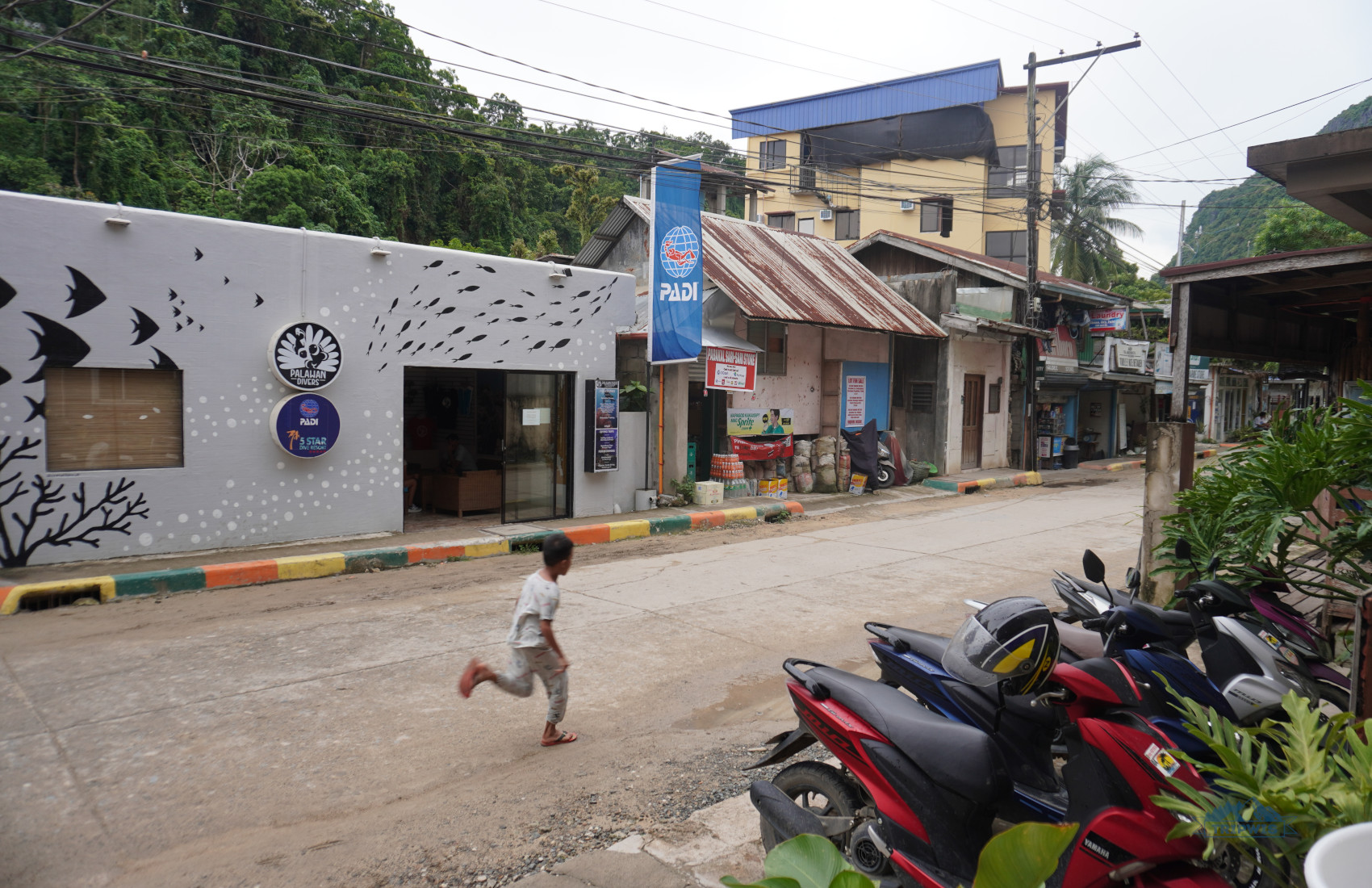
August in Palawan most resembles your toxic bf/gf: It will not be open, honest, predictable, or easy to follow. You never know quite what you’re going to get!
A few years back, August was almost 100% of the time under the cover of rain clouds (much like Forks, Washington, but you won’t find an Edward type here in a million years), but due to the climate changes, it can now be blessed with pleasant sunny days amid the week-long storms. Even when the forecast predicts rain and gloom, Palawan might rebel and give you a great afternoon, as a treat!
However, it is bad planning to hope you’ll luck out: Most of the time, expect high humidity, strong winds paired with torrential downpours (short, but still annoying), low visibility, and cancelled tours.
You will not be cold though! Average temperature in Palawan in August is +30.8°C / 87.4°F, which, paired with humidity of 85-90%, creates a sauna effect that gets unbearable as soon as the sun starts to reach the zenith. Storm warnings get more and more frequent, but we’re still not in typhoon territory… yet!
September and October
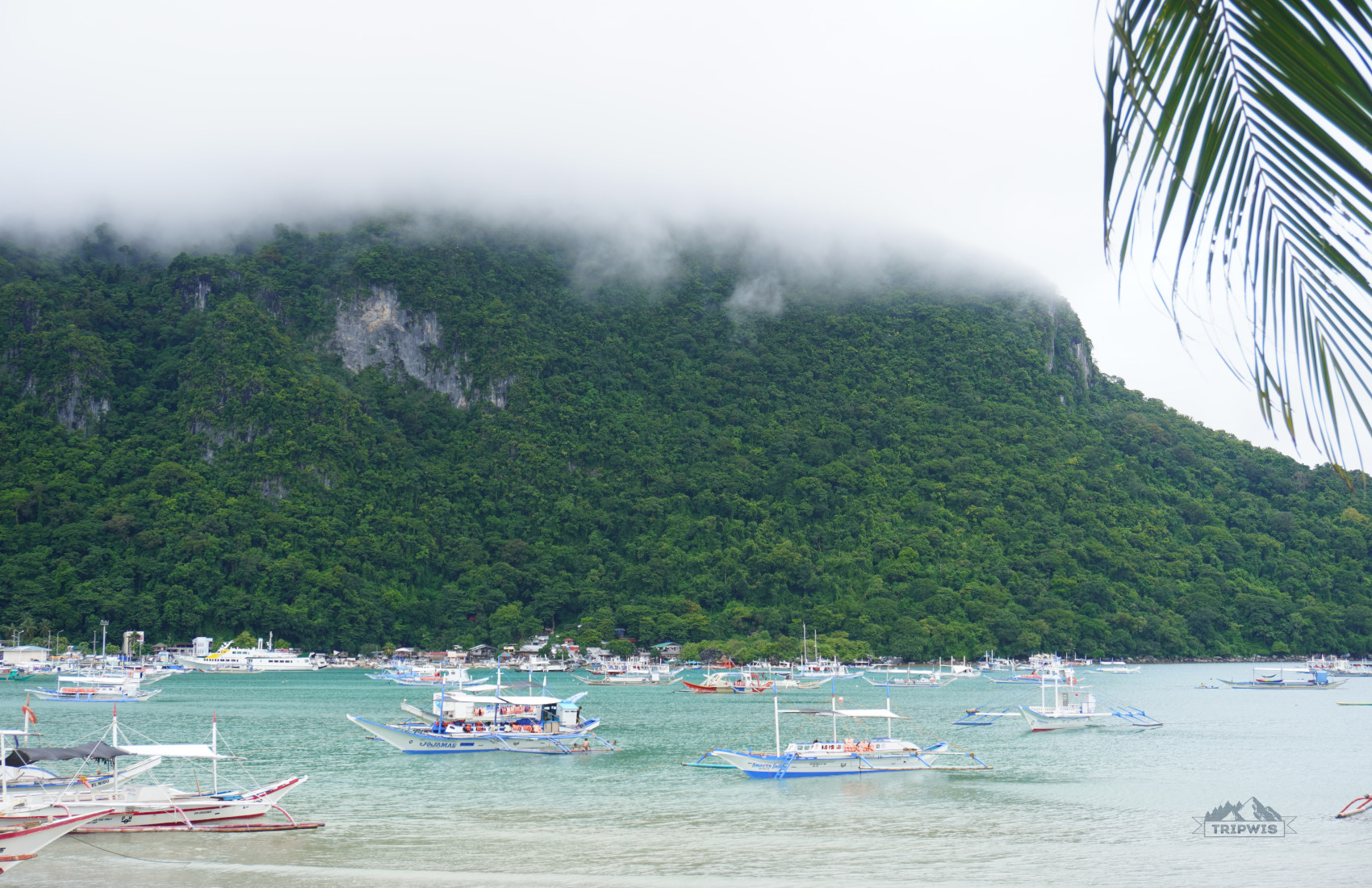
Now we’re in full-on typhoon territory! Though Palawan is said to be not as prone to typhoons as other destinations in the Philippines, these natural disasters still affect the area tremendously. Last September, Palawan was merely grazed by a terrible typhoon (the island wasn’t in the center of its path), but it was enough to cause pure chaos and lots of flooding.
Overall, there’s a lot of rainfall during these months, but the sun is beginning to make more and more cameo appearances the closer to Halloween it gets. The temperatures stay strong at +26°C…30°C (79-86°F), but the possibility of getting stuck in a natural disaster creates a substantial lack of demand in Palawan among holidaymakers. The prices are at their lowest during these months; some businesses even close for a little while in preparation for high season that’s slowly beginning to loom on the horizon.
- Our last trip to Palawan fell on the last week of September, and it wasn’t as bad as we’d expected. Two out of five days were plagued by frequent torrential downpours, but the other three were fine! Sure, the clouds and the sun were as on-and-off as a Ross and Rachel relationship, but the bottom line still warmed the heart — there were sunny days, after all!
If you’re already in Palawan when the typhoon hits, there’s not much you can do but wait it out. If you’re just about to leave for your vacation, you can check windy.com or any other weather app and see your chances of having a relatively relaxing time.
What happens in Palawan when there’s a storm warning? Shortly: Ferries, flights, and water activities get cancelled all across the board; swimming is prohibited too; locals get prepared for possible floodings, with sandbags and other reinforcements made to prevent damage. There are no shelter in place orders until the things get really serious, but it should be common sense to stay inside when the winds are whipping at top speeds, bending and breaking coconut trees.
So, is it a good idea to go to Palawan in September or October? Off the top of our head, no… But never say never! If it’s not your first time on the island (and you can afford a little weather gamble), then roll the dice!
November
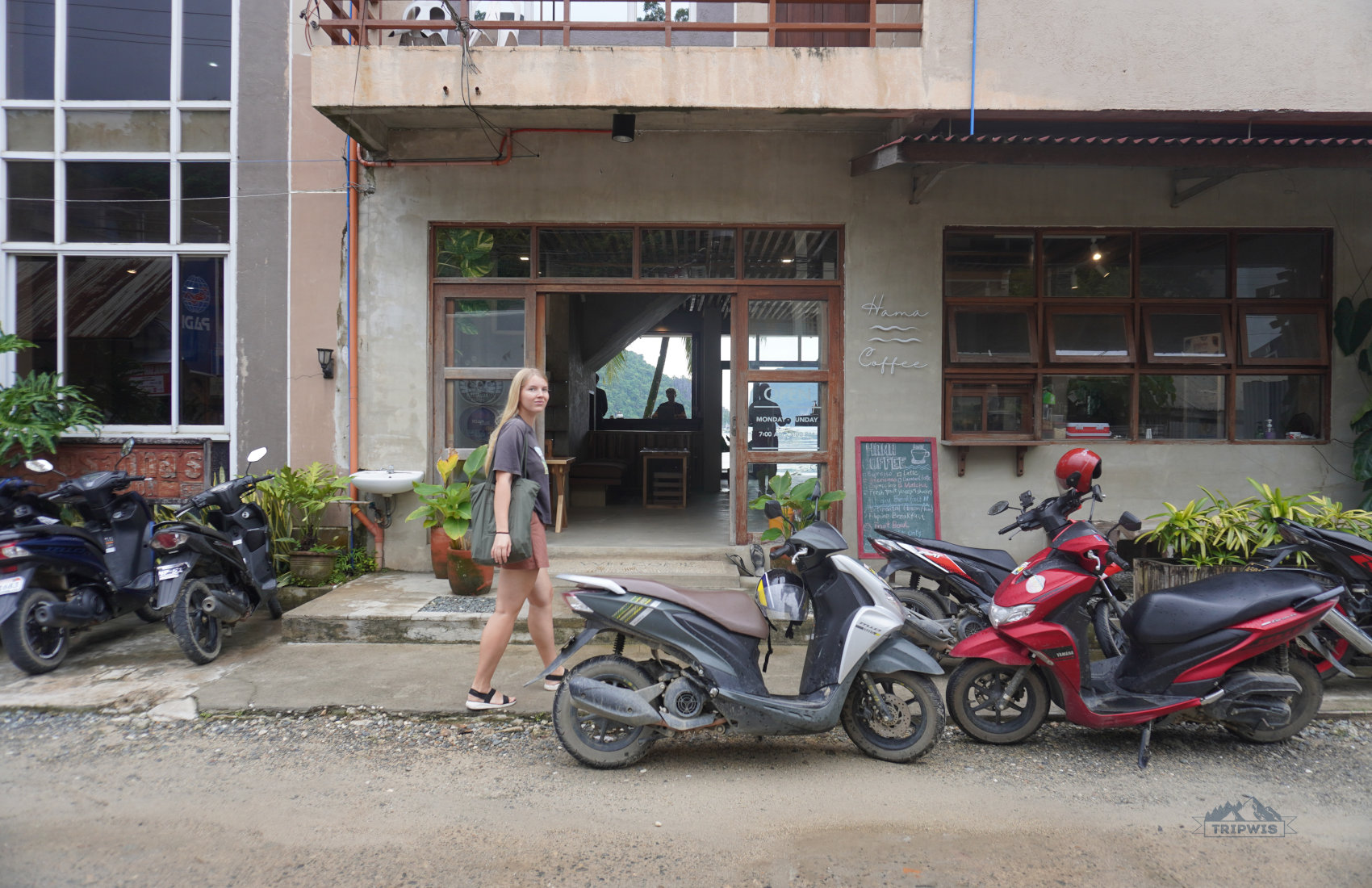
Another transition month, November is a great option for when you want a taste of Palawan’s high season atmosphere, but don’t want to drop big bucks on your vacation. The weather in Palawan in November is getting a makeover montage: It starts off with Habagat’s doom, gloom, rain, and nasty winds, but then it takes its glasses off, changes the hair a little bit, and oh, becomes a thing of beauty — Amihan’s finest specimen, with pleasant breeze and drier atmosphere.
Many travelers know of November’s allure, but not all — the hotels in Palawan sit half-occupied, with prices on a very gentle rise towards high season’s outrageous numbers. If you can’t stand the crowds, then November is the best time to visit Palawan.
And then December comes… roll the tape again!
When not to go to Palawan?
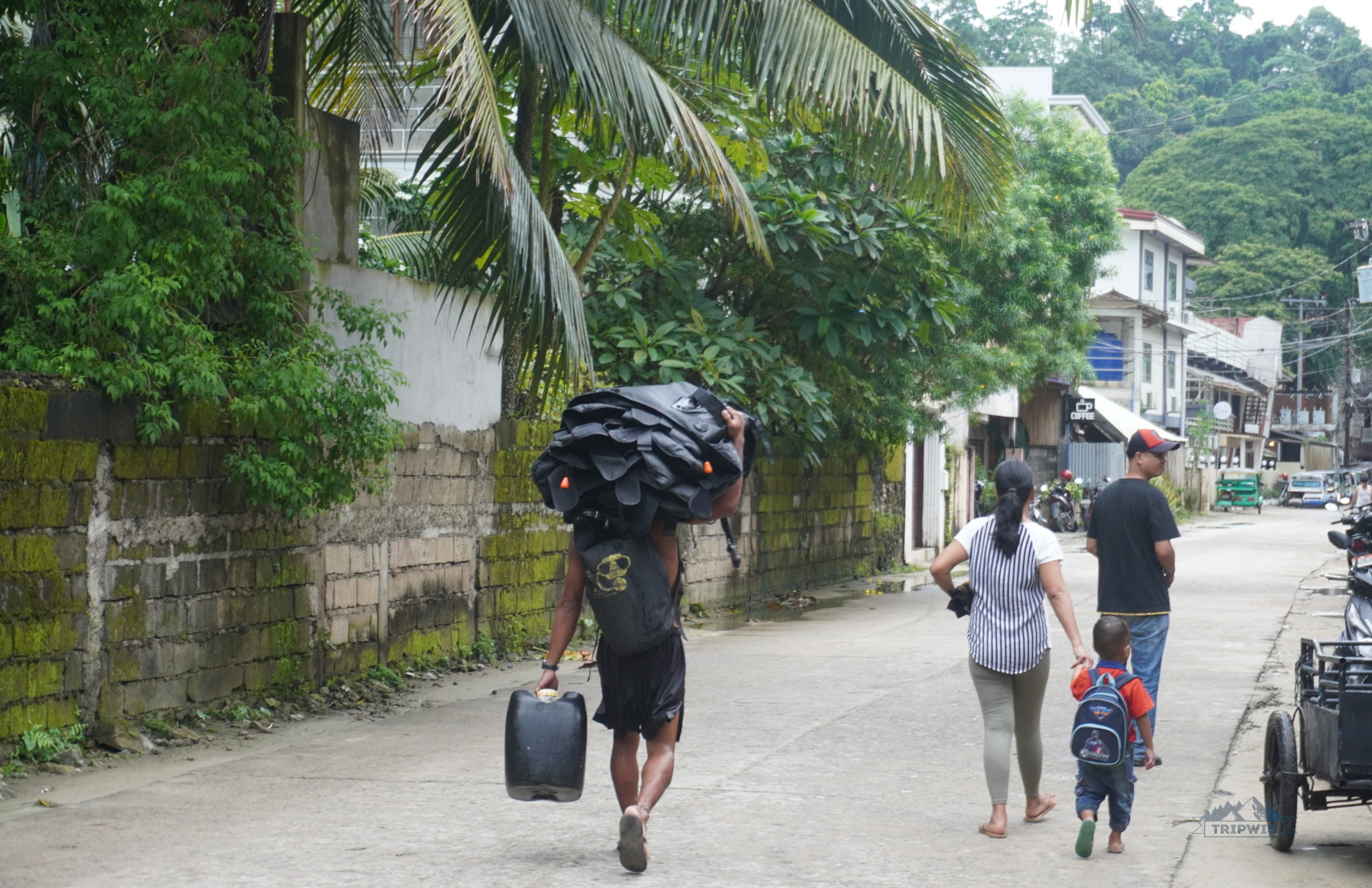
It’s pretty self-explanatory that we chose the months of September and October as the most no-go periods for a vacation in Palawan. And while it’s true that we got lucky with our latest September trip, the risks far outweigh the rewards: You don’t want to spend your entire trip holed up in a hotel room!
If you do decide to make use of huge discounts on accommodation in Palawan during these months, we have a few tips that will help you prepare for the worst-rain-case-scenario:
- Pack waterproof everything! Start with a rain jacket and an umbrella, and then consider waterproof shoes and a cover for your backpack (or an entire dry bag; it will come in handy on island hopping tours either way).
- Try and stay flexible with your itinerary. Bad weather means tour cancellations, so have at least a couple of extra days when you can reschedule the activity for.
- Either embrace the rain (use Tom Holland’s “Umbrella” skit as inspiration), or plan some indoor activities: Explore local cafes or plan an outing to the Palawan Museum.
- Stay safe at all times: When the weather gets bad in Palawan, there are usually a few things to look out for. Fallen trees, floodings, and even landslides can occur, so keep the dangers in mind and act accordingly.
Where to stay on Palawan Island? El Nido and Puerto Princesa
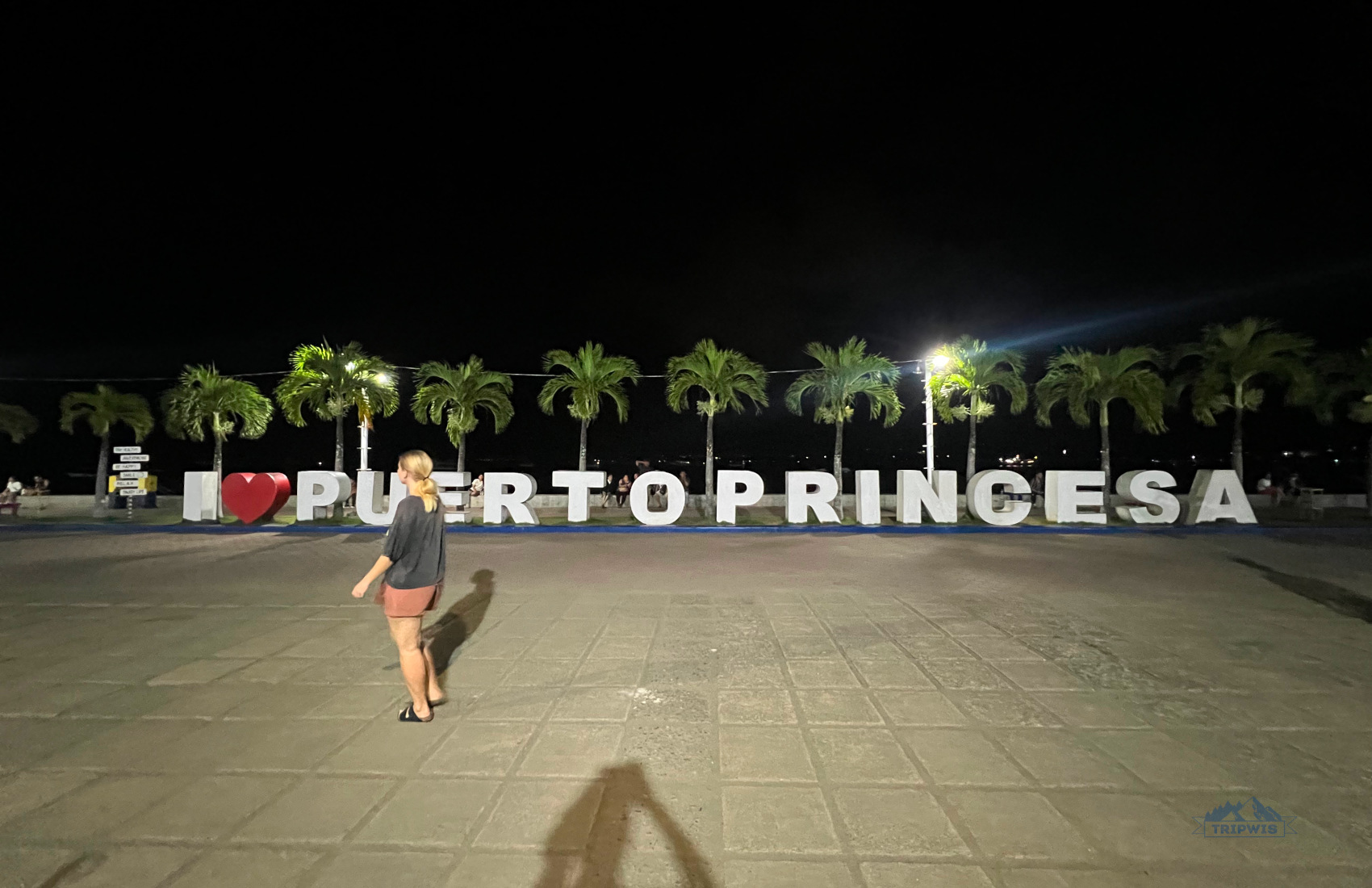
Palawan is known for its unparalleled natural beauty and warm and welcoming community.
When choosing a place to stay in Palawan, it’s a great idea to figure out your travel needs: Do you want to go somewhere where there are no other tourists around? Or do you want to have every creature of modern comforts at your fingertips at all times of the day? Do you wish to party into the wee hours of the morning?
Look into the island’s top destinations and choose the one that speaks most to your wants and needs:
- Puerto Princesa — if you’re flying to Palawan, chances are, you will arrive in Puerto Princesa, as it’s the largest town on the island. Do not consider it a mere stopover on your way towards adventure. The fun starts here, at Puerto Princesa Subterranean River National Park — get a boat tour of these intricate underground cave systems! Because of its more urban location (it even has a shopping mall), the best time to visit Puerto Princesa is a question with many possible answers. After all, you can always wait out the rain in one of the many restaurants of this town!
📍Our hotel pick here is OYO 554 Dad’s Bayview Pension — cheap and unpretentious
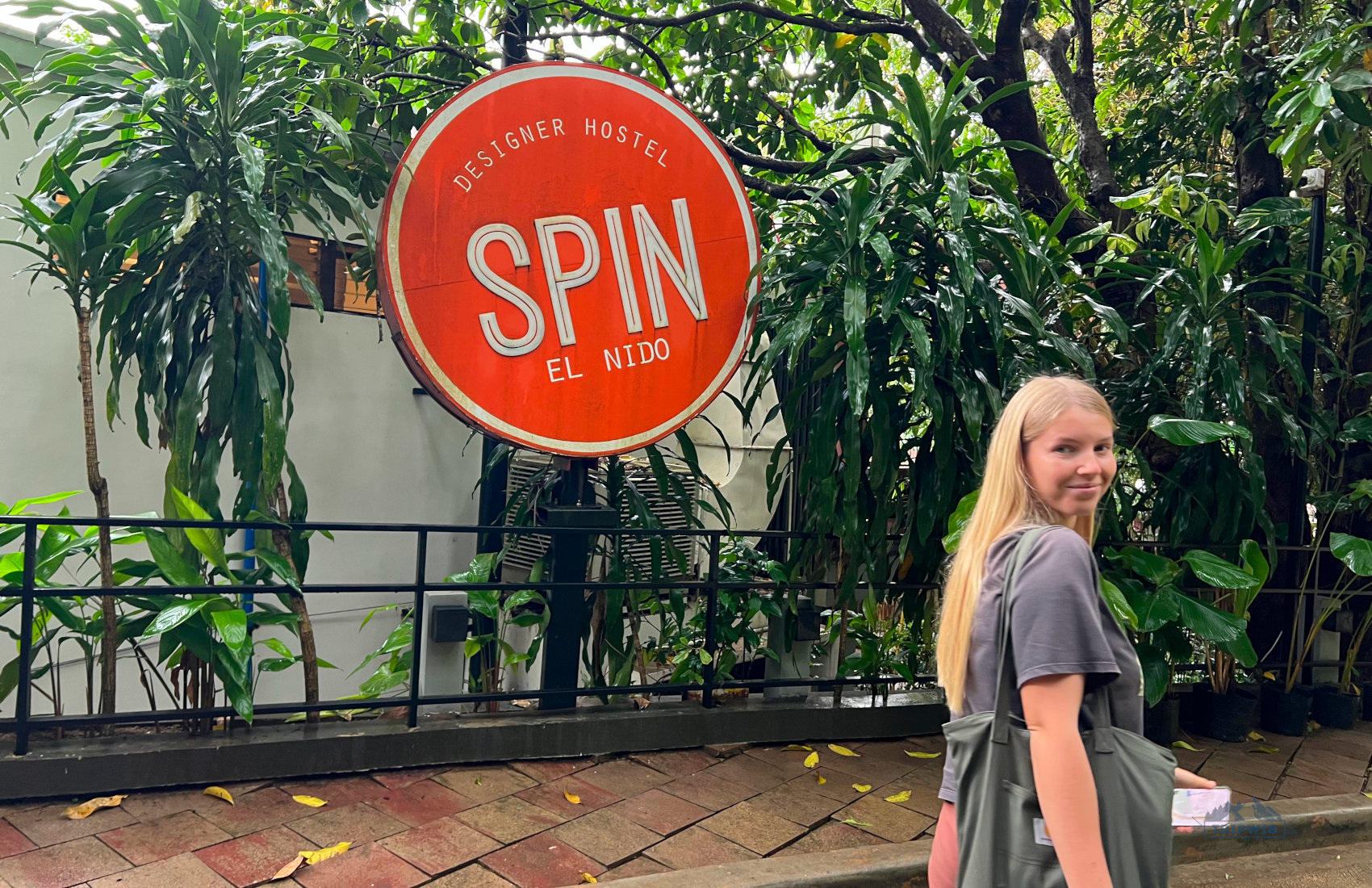
- El Nido — without a doubt, the cream of the crop location on the entire island of Palawan! Though getting here is a whole different story (keep reading to find out more or click the link for a separate post), every bump of the road your bottom feels is worth it. El Nido has the best beaches, the most verdant vegetation, the clearest turquoise waters, and the craziest nightlife. The best month to visit El Nido in Palawan is January — the water’s at its calmest, looking almost like glass; and you simply cannot come all the way to Palawan and not get an island hopping boat tour from El Nido!
📍Our hotel pick here is a private room in Spin Designer Hostel — the cheapest yet decent - Port Baton — the chiller sibling of El Nido, Port Baton can be used as a vibes divider between Puerto Princesa and the aforementioned ultimate Palawan destination. Port Baton isn’t as popular a spot (and it’s not as developed), but it only adds to the overall romantic atmosphere of the place. If you crave a honeymoon that feels like you’re stranded on a deserted island (but with an option to get margaritas), Port Baton is a place for you!
- Roxas — even more remote and isolated destination on the Palawan Island, Roxas is great for when you want to go somewhere tourist-less. Set on the opposite side of the island from Port Baton, Roxas is almost completely devoid of the tourism industry luxuries. Want to see how the locals live? Come to Roxas and try to blend in — the mission will be failed 100% of the time, but still worth the try!
More things to know before traveling to Palawan, Philippines
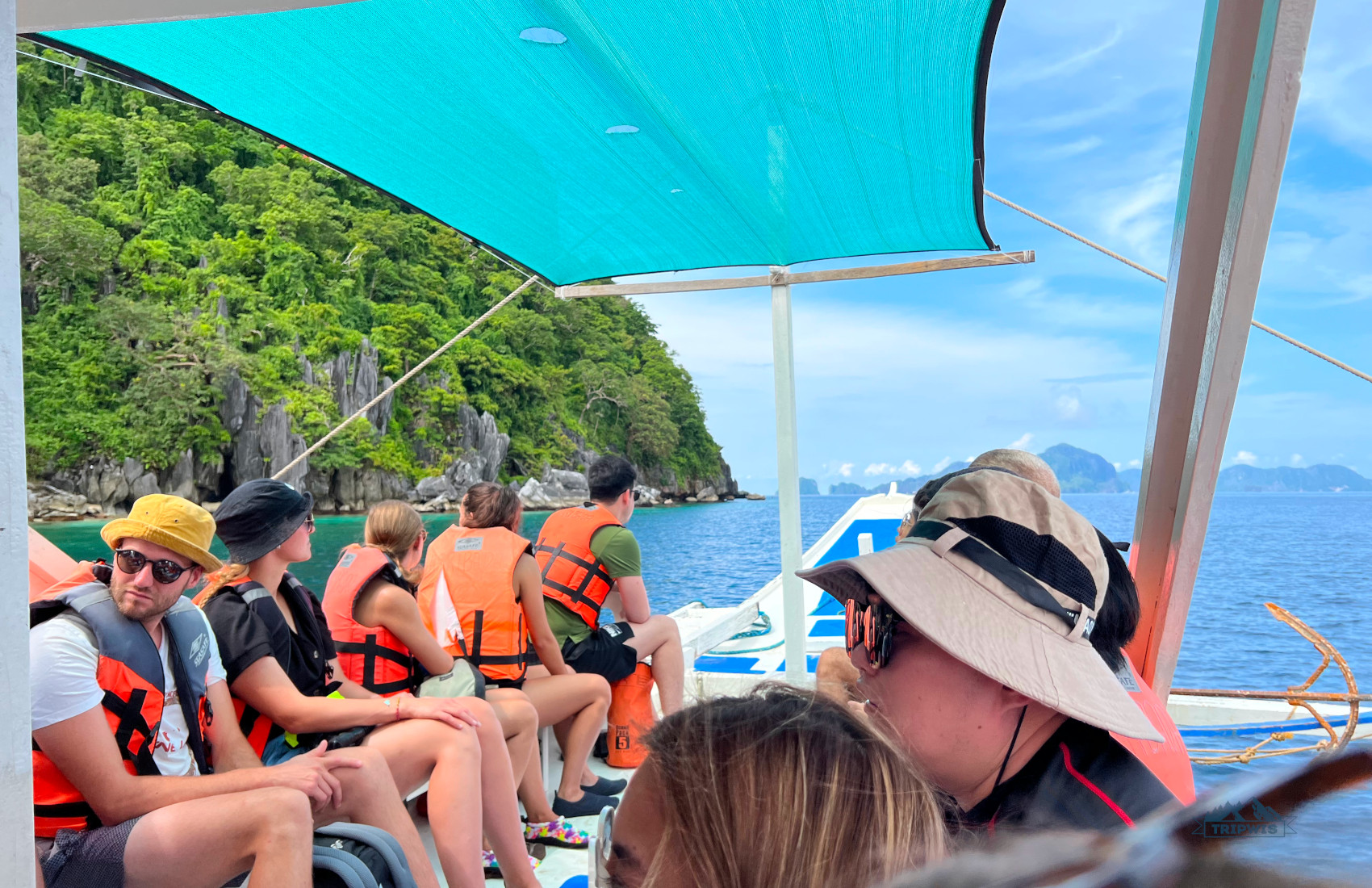
The Philippines can be considered exotic and even mysterious: After all, any destination with such unpredictable weather and unique panoramas will be hard to get used to for an average traveler. Palawan, the safer, but one of the more breathtaking islands of the Philippines (Boracay being its most promising contender) is no exception! While the topic deserves its own separate article, we can’t leave you high and dry without some of Palawan’s most notable facts!
Did you know that:
- Most people debate between choosing Puerto Princesa and El Nido as their vacation bases due to their fear of the drive between the two destinations. Why is that and are the things really as bad as they’re described? Check out our guide to getting from Puerto Princesa to El Nido, where we bust the myths and create a helpful plan of action to alleviate some common anxieties the travelers coming to the island might experience.
- Going on an island-hopping tour is one of the top things to do in Palawan! We chose the tour A, although there are also tour B, C, and D. Snorkeling in the azure waters of the surrounding islands, watching the little fishes swim in and out of the abandoned ship wrecks, coming upon secret beaches, and getting lost in echoey chambers of giant caves, — you didn’t come to Palawan if you failed to do at least a couple of those things!
- In Palawan, island time is a real thing! Leave your need for a strict schedule and itinerary at home: Some businesses’ working hours are mere suggestions, and you don’t always know what the Palawan weather has in store for you tomorrow. You need to be flexible to enjoy your vacation on the island, both in your time and your attitude!
So, what is the best month to visit Palawan?
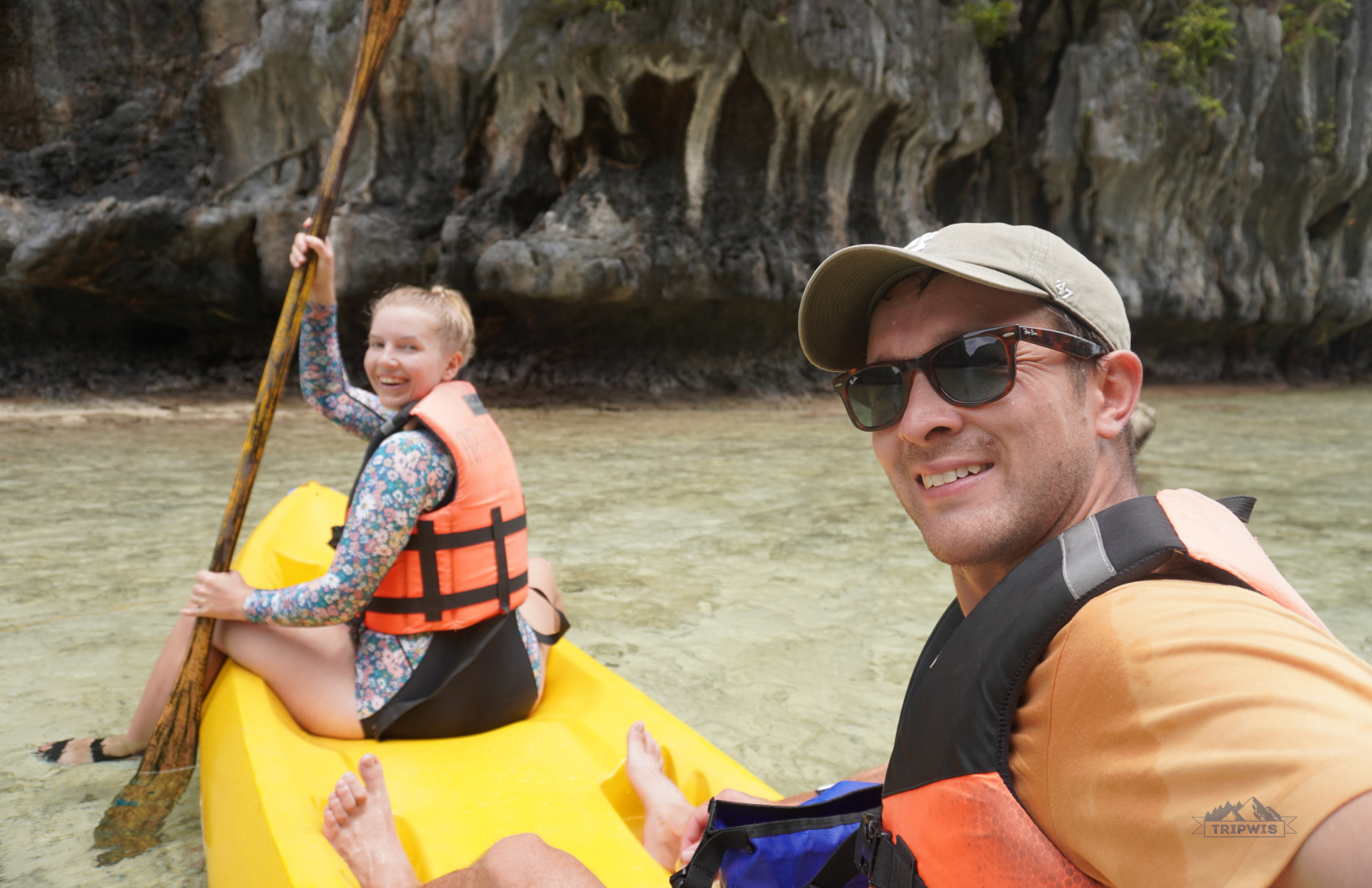
Now that we’ve laid all the Palawan’s climate cards on the table, it’s time to choose the winner (or winners) of the best month category. A few options are great in their own ways:
- December through January — ultimate high season, amazing weather that’s perfect for water activities and tanning. Can get crowded during the holidays, and expensive accommodation prices are the main cons.
- May and November — shoulder months. Cheaper accommodation, fewer tourists, but the weather is a 50/50 gamble: Will you get rained in or spend an entire vacation at the beach? No-one knows for sure, and that’s thrilling!
- Summer months of June through September — low tourist season; almost no people and the cheapest lodging options possible. A typhoon can go through, and the rains are harder and more frequent… If you’ll put up with anything to get a good deal, knock yourself out! However, if it’s your first time coming to Palawan, we would advise against these months. Give yourself a chance to fall in love with this magnificent island when it’s at its best!
So, what would we choose as the best month to visit Palawan in 2025? January all the way! Yes, you will spend significantly more, but the experiences you’ll get to have are worth it, a million times over!
